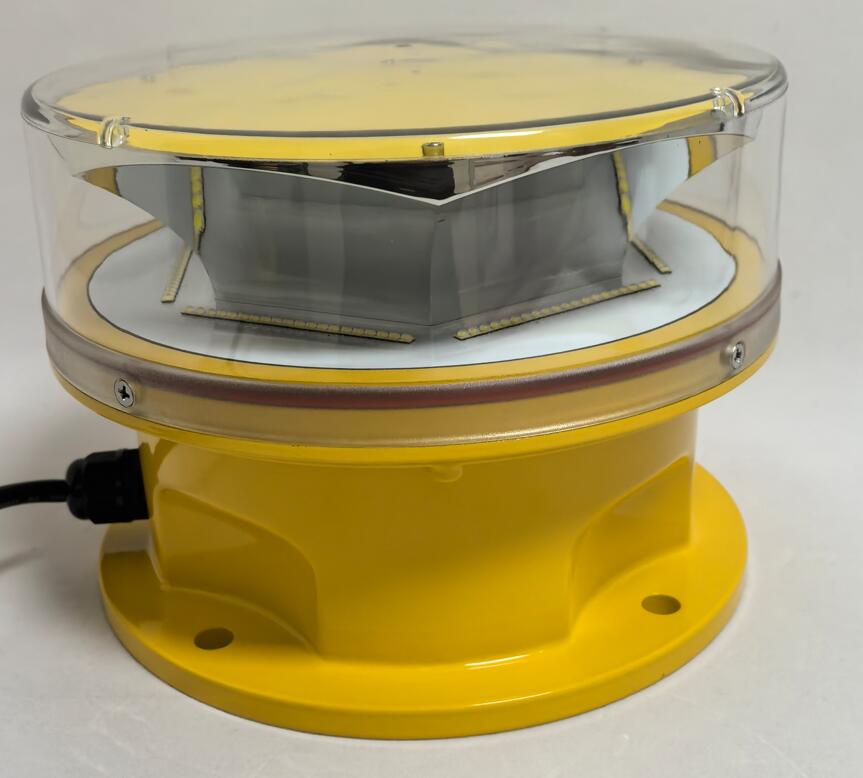Guardians of the Night: How Aircraft Warning Beacons Ensure Aviation Safety
In our vertically expanding world where skyscrapers pierce clouds and wind turbines dot landscapes, aircraft warning beacons serve as critical sentinels of airspace safety. These unblinking lights form an essential visual language between human engineering and aviation, preventing catastrophic collisions in an increasingly crowded sky. This article explores the evolving technology, regulatory framework, and innovative solutions shaping modern aircraft warning beacon systems.
The Silent Protectors of Airspace
Aircraft warning beacons perform multiple life-saving functions:
Collision Prevention: Create visible boundaries for pilots navigating through urban canyons and remote areas

All-Weather Reliability: Maintain visibility through fog, rain, and other low-visibility conditions
Height Differentiation: Help pilots distinguish between stationary structures and other aircraft
Emergency Reference: Serve as navigational markers during search and rescue operations
| aircraft warning beacon |
Classification by Intensity and Application
Modern beacons are categorized by their luminosity and specific use cases:
1. Type A (Low-Intensity)
Output: 32.5 candela steady red
Height Range: ≤45 meters (148 feet)
| aircraft warning beacon lights |
Typical Installations: Small cell towers, construction cranes
2. Type B (Medium-Intensity)
Day/Night Operation:
Day: 20,000 cd white strobe
Night: 2,000 cd red strobe
Height Range: 45-150 meters (148-492 feet)
Common Locations: Telecom towers, power transmission lines
3. Type C (High-Intensity)
Daytime Visibility: 200,000 cd white strobe (visible up to 40 miles)
Height Requirement: ≥150 meters (492 feet)
Critical Installations: Skyscrapers, offshore oil platforms
Global Regulatory Landscape
International aviation authorities maintain stringent beacon requirements:
Standard Authority Key Requirement
FAA AC 70/7460-1L FAA (US) Lighting specifications for structures >200ft
ICAO Annex 14 International Global harmonization of obstacle lighting
CAP 168 UK CAA Specific flash patterns and synchronization
CASR Part 139 Australia Maintenance and inspection protocols
Technological Breakthroughs
The beacon industry has witnessed remarkable innovations:
Solid-State Lighting
Transition from xenon to LED technology
85% energy reduction with equivalent luminosity
10-year lifespan with minimal maintenance
Adaptive Lighting Systems
Automatic intensity adjustment based on ambient conditions
Radar-triggered activation to minimize light pollution
Integrated Monitoring
Cellular-connected diagnostic systems
Predictive failure algorithms
Remote configuration capabilities
Sustainable Solutions
Solar-hybrid power systems
Recyclable composite materials
Wildlife-friendly spectral outputs
Emerging Challenges and Solutions
Challenge 1: Urban Light Pollution
Solution: Directional beam focusing and smart dimming technology
Challenge 2: Maintenance Accessibility
Innovation: Autonomous drone inspection systems with AI defect detection
Challenge 3: Energy Demands
Advancement: Piezoelectric energy harvesting from wind vibrations
Challenge 4: Avian Impact
Development: Ultraviolet spectrum beacons invisible to most birds
The Future Horizon
Next-generation beacon systems will incorporate:
LiFi Integration: Dual-purpose visible light communication
Blockchain Logging: Tamper-proof maintenance records
Holographic Markers: 3D projection systems for enhanced visibility
Self-Healing Coatings: Nano-materials that repair surface damage
Aircraft warning beacons have evolved from simple incandescent bulbs to sophisticated IoT-enabled safety systems. As urban density increases and air traffic grows, these unassuming devices will continue to play a pivotal role in global aviation safety. The ongoing convergence of materials science, renewable energy, and smart technology promises to make future beacon systems more reliable, sustainable, and effective than ever before. In our collective journey toward safer skies, aircraft warning beacons remain indispensable guardians of the aerial frontier.
